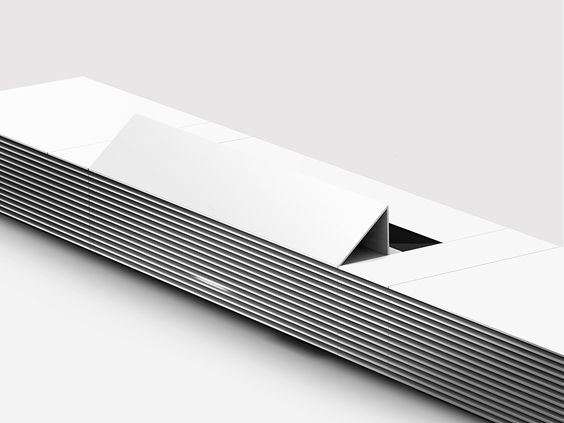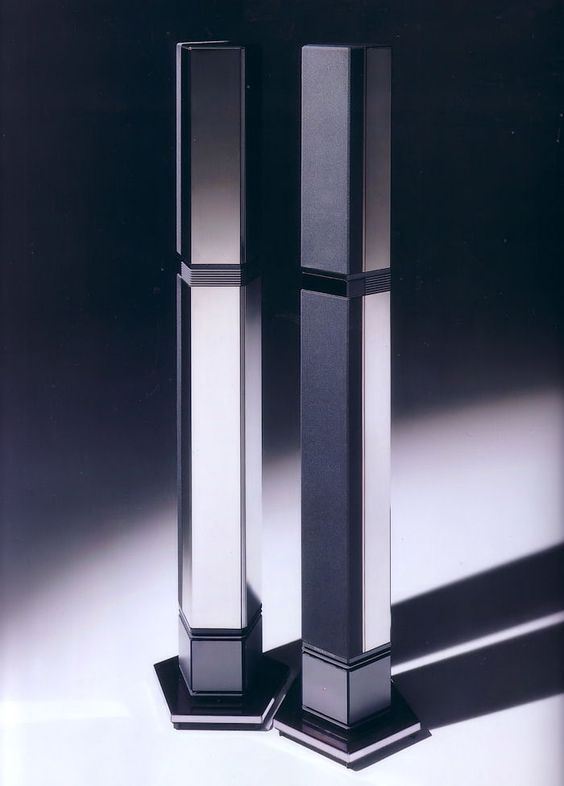If we look at some household gadgets, we can observe several formal similarities that they have with buildings.
In some cases, the visual design of the devices is so architectural that questions arise as to whether this similarity is intentional.
Is a specific aesthetic fashion trend so common that it is reflected automatically in the design of buildings and fixtures, or is it a deliberate process?
What objective factors lead to such aesthetic echoes between architecture and household objects?
Below, we will discuss the artistic and practical features of mentioned similarities and connections.
In this case, let’s consciously avoid the tradition of perceiving the concepts of design and architecture differently, and use these two terms to separate specialties. We will also use the word ‘gadget’ as a collective concept that unites modern household appliances of different sizes and purposes.
Historically, industrial design is a relatively late emerging phenomenon.
In the early stage of development, it borrowed many artistic techniques from rich architectural heritage.
For example, the first devices of the Industrial Revolution period directly repeat the forms of architecture due to a lack of expressiveness.
It was common for designers to use silhouettes of buildings, order elements, and decorative motifs.
At the initial stage, the devices are nothing more than quasi-architectural objects that resemble building models. Examples include early radios, tape recorders, various desk tools, etc.
One paradoxical characteristic of early tool design is that the more typologically-new the device, the more its connection with the architectural forms of the past.
Later, industrial design seems to find its independent expression. However, the inclination or inspiration toward architecture remains.
If industrial design took the path of its own expression, what is the reason for the modern similarities?
At this stage, let’s leave out the economic, cultural, and social significance of architecture and focus on the process of finding the form.
In this process, the architect faces the same tasks that the industrial designer has to deal with while designing devices and cars:
In both cases, the shape is formed according to the function, but the scale and tasks differ.
Therefore, it is possible to imagine the building as a large-scale device, as well as vice versa – an industrial design product can be perceived as small-scale architecture.
So, to what extent do designers perceive their creations as small-scale architecture?
For example, Giorgetto Giugiaro does not refer to his work with any word other than architecture, whether designing a Nikon camera or a car.
Many outstanding designs indirectly answer this question: Sony and X-box game console series, Bang&Olufsen amplifiers, etc.



An outstanding example is the Tea and Coffee Towers tableware series by Alessi.

Is the tendency of industrial design to resemble architecture one-sided?
Among the examples in the history of architecture, the first that comes to mind when thinking about this issue is Le Corbusier’s famous phrase: “The house is a machine for living.” (“Une Maison est une machine-à-habiter”)
This statement should not be perceived directly, but within its context.
However, it shows an aspiration, characteristic of the beginning of the Twentieth Century, towards a mechanical, apparatus-like functionality.
It is explained in the spirit of the relevant historical moment, which liberated architecture from the obligation to represent state ideologies or religious doctrines, and left behind its modernist agenda, in which the functional principle came to the fore.
In the works of Le Corbusier, the “apparatus” of the building has more content than a formal load.
A more literal example is the transformation of a building into a device is the Villa Girasole, by architect Angelo Inverzinni.

This building is a machine that rotates 360 degrees during the day through an underground mechanism. To be permanently oriented to the sun’s direction (hence its name).
An example of the combination of gadgets and buildings is the architectural typology of buildings, which a person consumes not as the limiting shell of his living but as a giant device.
These include silos, telephone stations, archives, data centers, fully robotic warehouses, and enterprises.
Another question is how well these buildings acknowledge their gadget nature, and whether they wear an appropriate hardware look from an aesthetic point of view. Unlike the first two shells (structure and facade cover), the third works according to its hardware purpose. In the form of the third shell, the building appears as a single, large-scale mechanism.
Over the past 50 years, architecture has had numerous reactions to industrial expression.
To some extent, these connections nourish the high-tech direction.
There were also alluring attempts in the Japanese architecture of the 1980s.
Inspiration with fantastic devices and mechanisms can be seen in the architecture of Bernard Khoury.
While reviewing the similarities, we should also note the differences between architecture and device design.
Unlike a building, a tool cannot transform its volume over time.
It is difficult to imagine changing the shape or adding something to the coffee machine or the TV when the extension of a residential or public building is common practice.
Despite these and other differences, the extensive list of aesthetic inspiration and technological similarities gives us reason to think that the future development of architecture and industrial design will be very close.
It is worth noting the growing potential for industrial production of buildings.
In the wake of the widespread practice of prefabricated construction, it is expected to move to a new level of development of large-scale 3D-printing technologies, if this method becomes more accessible and widespread. Architectural design will become closer to industrial design methods. In particular, processing objects intended for factory production.
“Building as a gadget” can be seen as one of the possibilities of mass housing, or one of the possibilities of available construction methods, manufacturing methods, and aesthetic solutions.
The connection between architecture and industrial design can be promising from an applied point of view.
It is essential to note this aspect, especially today, with attention rightly focused on the public or environmental agenda, and an overview of the artistic trend seems out of place.
All of the abovementioned stems from the desire to share a long-time observation.
Attention to the noted similarities is, of course, a general and unclaimed opinion. However, attempts to connect these two disciplines have a special place in our practice.
This text refers to the fact that architecture is a source of inspiration for many designers and vice versa.
Therefore, we considered it necessary to point out the main foundations on which the connection to the buildings and gadgets are based.

 English
English ქართული
ქართული